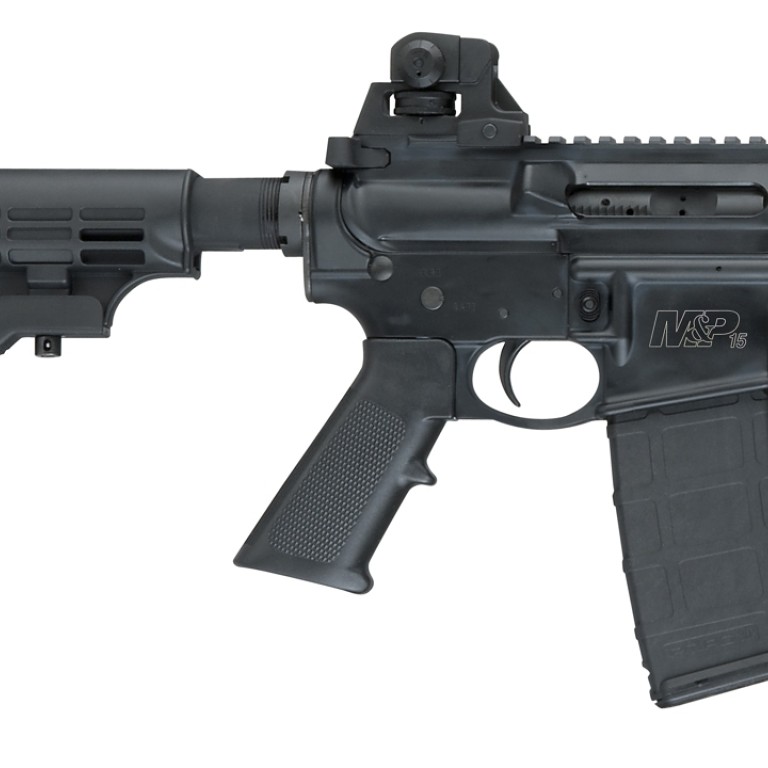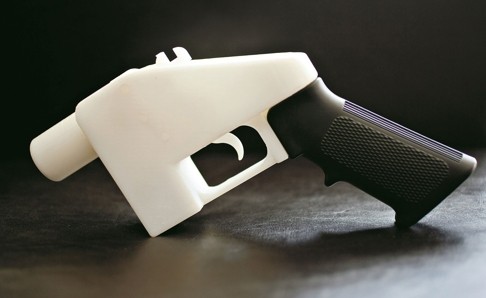
Review | Book review: Design and Violence - how we conceive the tools of our destruction
What started as a website and digital gallery to catalogue the history, design and uses of some of humanity’s most violent gadgets has now become a fascinating book

by Paola Antonelli, Jamer Hunt, with Michelle Fisher
MoMA Publications

When Syed Rizwan Farook and Tashfeen Malik killed 14 people at a holiday office party in San Bernardino last month, they were armed with a veritable arsenal: a Smith & Wesson M&P 15 assault rifle, a DPMS Panther Arms assault rifle, a Springfield Armory 9mm handgun and a Llama 9mm handgun.
In the wake of the killings, there was lot of talk about where the killers may have bought their weapons. But there was little on their history or their design.
If you’re not a gun enthusiast, you may not know that the initials in the Smith & Wesson M&P stand for “Military and Police”, or that the gun, which has been in production for roughly a decade, can accommodate 10 to 30 rounds, and comes with a front and rear sight and a chrome-lined barrel. The Springfield 9mm hails from the armoury that stored gun carriages in the wake of the US revolutionary war. The Llama comes from a now-defunct Spanish company which manufactured handguns for much of the 20th century.
Design’s history of violence, unless linked overtly to political and social suppression, too often goes unexplored
Beyond these cursory facts, it can be difficult to get design information. Who sat at the drawing board (or computer screen) and devised the mechanics and aesthetics of these weapons? For whom and why?
We may not immediately have the answers to those questions in the case of San Bernardino. But a book produced by Museum of Modern Art curator Paola Antonelli and design critic Jamer Hunt gets at some of these issues in an intriguing way.
Design and Violence began life as a website – an essay platform and digital exhibition space. Launched in the autumn of 2013, the project set out to catalogue the history and nature of some of humanity’s most violent gadgets: who designed them and why; how they are employed and by whom.

Accompanying each post was an essay that reflected on the object’s significance. Tech writer Rob Walker wrote on the 3D-printed gun known as “The Liberator”. The novelist Aminatta Forna explored how everyday vehicles are hacked and used in war. Steven Pinker wrote on the phenomenon of “Million Dollar Blocks”, a data-mapping study that looks at how a disproportionate number of people in US jails hail from a small number of low-income communities.
Antonelli and Hunt, with MoMA curatorial assistant Michelle Fisher, have now assembled roughly 40 of these macabre objects into Design and Violence, a handsome 232-page book. Contained within is the photography – some of it elegantly done by Hunt – the essays and some of the more poignant comments the posts drew online.

“Within the profession, voices that trumpet design’s commercial and aesthetic successes have dominated,” write Antonelli and Hunt in their foreword. “Design’s history of violence, unless linked overtly to political and social suppression, too often goes unexplored.”
The book, interestingly, opens with the banal. Design and Violence begins with the history of the simple box cutter – the tool of terror from 9/11. From there, it features guns (3D printed and mass-produced), bullets and ninja stars.
There are entries in the book that look at forms of environmental violence (mountaintop removal mining techniques), digital violence (the Stuxnet virus) and animal violence (a specially designed ramp to lead cattle to slaughter).
The book, in its clinical presentation of objects and concepts, takes us deep into the objects of ritual brutality. Flipping through the pages, these can come to seem almost unreal – like the fabrications of some far-out invented world. Except that they are all too real. And in each of these pages, it is possible to see our own hand.
Los Angeles Times

